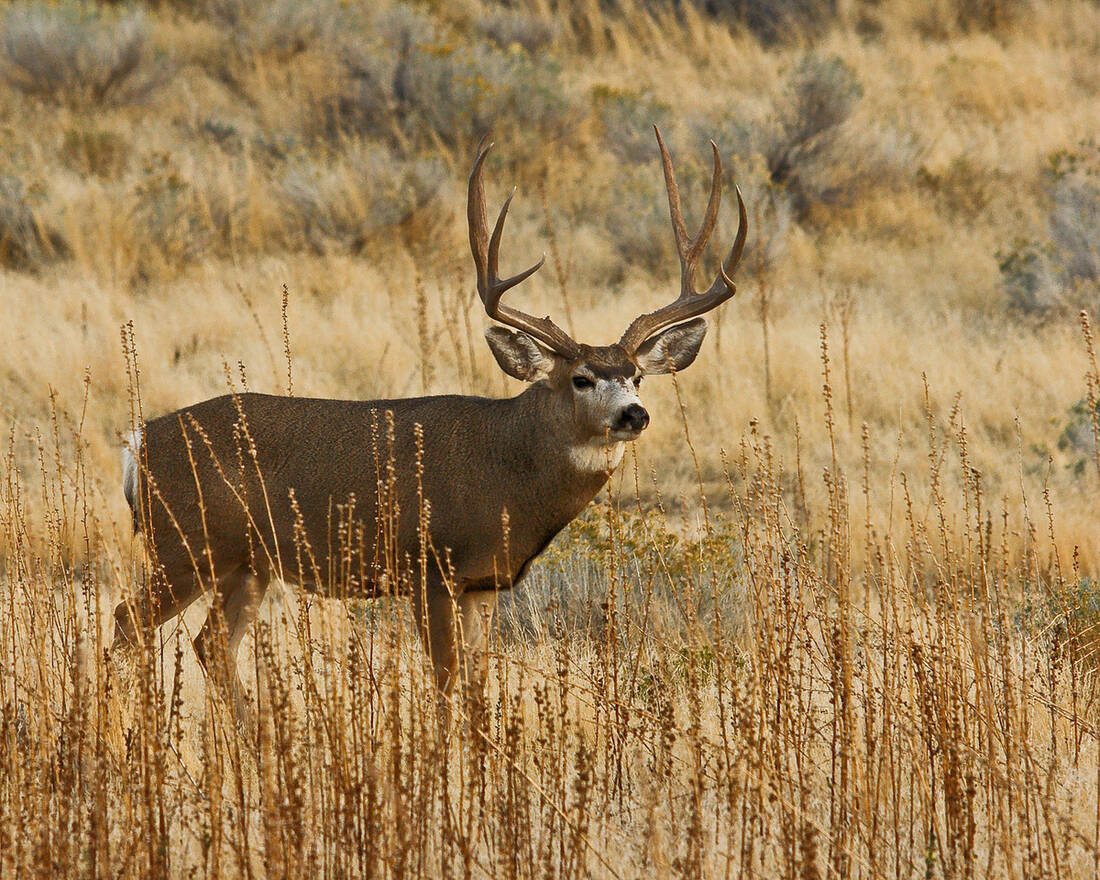Desert Mule Deer Populations and Value on Private Lands in Texas
The Borderland Research Institute at Sul Ross University reports: “Mule deer populations ebb and flow with precipitation but the relationship isn’t always simple. Mule deer herds in the Trans-Pecos averaged 150,000 individuals and varied considerably (98,000-222,000). Fawn production (fawn:doe) was also highly variable with an average of 48% and ranged from 12-87%. Rainfall levels in the Trans-Pecos ranged from 6 to 21 inches and averaged 13 inches.
In general, long-term drought eventually takes a toll on the west Texas mule deer herd. The strongest influence drought has on mule deer occurs in the winter and spring months, when rainfall is especially sparse. For west Texas, most rainfall occurs in summer and fall resulting in a flush of forbs that are critical to mule deer nutrition. As winter approaches, the availability of forbs decreases and mule deer increase their use of browse. In drought years, forbs are even more rare.
One way to curtail the effects of drought is to ensure that valuable forb and browse resources are available for your deer through proper habitat management. This may mean conducting habitat improvements to promote forbs and quality browse or minimizing competition with livestock and other wildlife. Conservative stocking rates can also help ensure adequate fawning cover which is critical to fawn survival. Creating more permanent water sources will also mitigate your losses. Lastly, harvest rates may need to be modified to allow mule deer to recover”[1]

Mule Deer are truly a valuable wildlife species for a Texas landowner, in regions where they exist, because this is a species that helps bring better returns if selling property. While White-tailed Deer are found nearly statewide in Texas, Mule Deer habitat and populations are limited to the western portions of the state making them more unique and precious in a value sense. And Mule Deer hunters are very enthusiastic about this game animal. Approximately 80–85 percent of the mule deer can be found in the Trans-Pecos Region, while the remainder tend to roam in the Panhandle and western Edwards Plateau regions.
Found in the Trans-Pecos areas are a subspecies of mule deer that can include a combination of both desert and Rocky Mountain subspecies, and there have been relocations done over the years to attempt to keep the mule deer populations even and healthy. The mule deer relocations began in the 1940’s, with a few in number moving from Trans-Pecos to Randall and Armstrong counties. Between 1950 and 1988, desert mule deer were relocated from the Trans-Pecos to the Panhandle counties; and Rocky Mountain mule deer from Colorado expanded into the eastern Texas Panhandle.
Mule deer poulations benefit greatly from the return of healthy and diverse Mule Deer habitats when rainfall cooperates. Private landowners doing their part when the arid regins receive welcome rainfall come together to make sure the populations remain healthy by providing good healthy rangelands with plenty of fawning cover and nutrition. Landowners continue to work hard to benefit the marvelous Desert Mule Deer resource by engaging in many practices including those that increase rainfall infiltration, from utilizing divots and spreader dams to capture runoff, thereby creating the much needed forbs and cover that help the deer survive.
Many ranches have even been honored for their incredible work. Landowners, more and more, are being proactive in the agriculture enterprises – coming up with innovative grazing management and livestock production techniques that create the diverse yet stable landscape that increases the value of the land by improving the populations of Mule Deer occurring on that land.
With increased awareness of this valuable resource, the Mule Deer, alongside increased research and outreach, we hope and expect Mule Deer populations to continue to thrive in the western portions of the private lands of Texas
[1] Italicized excerpt and/or paraphrased from the Borderlands Research Institute’s website; additional data also from same site: http://bri.sulross.edu/bg_muledeer_trends.html